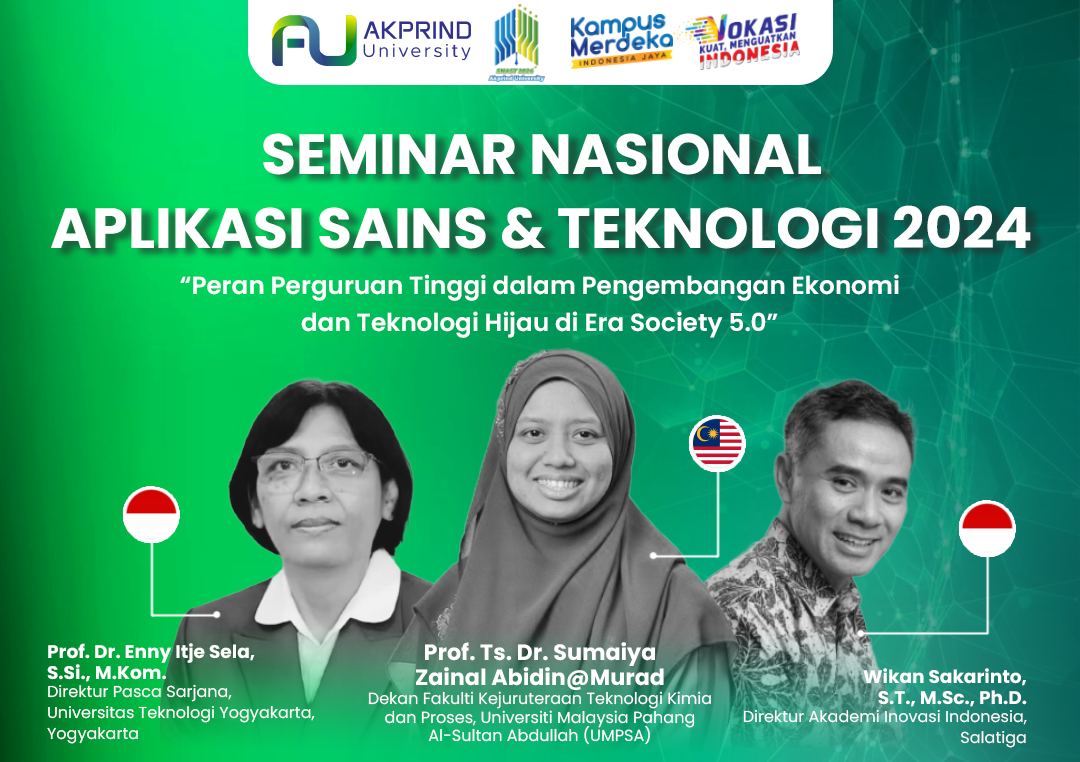PENERAPAN METODE K-MEANS UNTUK MENGELOMPOKKAN REKAM MEDIS PASIEN BERDASARKAN DIAGNOSA PENYAKIT GUNA MENENTUKAN DIAGNOSA TERTINGGI PADA SUATU PERIODE (Study Kasus : Klinik Dokter Kita)
DOI:
https://doi.org/10.34151/prosidingsnast.v1i1.5086Keywords:
Data Mining, Diagnosis, K-Means, Rapidminer, Medical RecodsAbstract
The development of information technology in the digital era has driven major transformation in the health sector, especially in data management. One technique that plays an important role is data mining, which allows the discovery of hidden patterns and complex relationships in large amounts of data. This technique is very relevant for patient data analysis and disease diagnosis, especially in grouping patients based on disease type in order to understand distribution patterns and carry out more appropriate interventions. The K-Means method is an algorithm that is often used in the data grouping process, which allows identifying groups of patients with similar characteristics and helps determine the dominant disease in a certain period. At Our Doctor's Clinic, patient data continues to increase, but management is still manual so it is not optimal for in-depth analysis. The current grouping process based on disease diagnosis is general and makes it difficult for management to identify diseases that frequently appear in a certain period, which has an impact on difficulties in making strategic decisions. Therefore, This research applies the K-Means clustering method and RapidMiner Studio software version 10.2. with the aim of automating patient grouping based on diagnosis. The data used is patient data for 2023 which consists of 966 patients with a total of 1609 controls with 20 types of disease. The results of the research show that there are three groups of disease diagnoses that occur frequently (highly dominant) and therefore require careful attention, namely the diagnosis of Grastitis, the diagnosis of ISPA and the diagnosis of Myalgia. Through this analysis, it is hoped that clinics can identify dominant diseases, understand distribution patterns, and increase the effectiveness of drug procurement planning and resource allocation. The results of this clustering are also expected to provide a basis for predicting future disease trends, allowing clinics to take preventive measures more proactively. Thus, it is hoped that the K-Means method can improve the quality of health services at Our Doctor's Clinic, make data-based decision making easier, and provide faster and more precise treatment for patients.
References
Abduh, R. (2021). Kajian Hukum Rekam Medis Sebagai Alat Bukti Malapraktik Medis. DE LEGA LATA: Jurnal Ilmu Hukum, 6(1), 221–233.
Alghifari, F., & Juardi, D. (2021). Penerapan Data Mining Pada Penjualan Makanan Dan Minuman Menggunakan Metode Algoritma Naïve Bayes. Jurnal Ilmiah Informatika, 9(02), 75–81. https://doi.org/10.33884/jif.v9i02.3755
Dinata, R. K., Safwandi, S., Hasdyna, N., & Azizah, N. (2020). Analisis K-Means Clustering pada Data Sepeda Motor. INFORMAL: Informatics Journal, 5(1), 10. https://doi.org/10.19184/isj.v5i1.17071
Magdalena, I., Salsabila, A., Krianasari, D. A., & Apsarini, S. F. (2021). Implementasi Model Pembelajaran Daring Pada Masa Pandemi Covid-19 Di Kelas Iii Sdn Sindangsari Iii. Jurnal Pendidikan Dan Dakwah, 3(1), 119–128. https://ejournal.stitpn.ac.id/index.php/pandawa
Prasetyo, M. Z., Susanto, E., & Wantoro, A. (2023). SISTEM INFORMASI REKAM MEDIS PASIEN THALASSEMIA (STUDI KASUS : POPTI Cabang BANDAR LAMPUNG). Jurnal Teknologi Dan Sistem Informasi, 4(3), 349–355. https://doi.org/10.33365/jtsi.
Putri, A. R. (2021). Optimalisasi Penggunaan Microsoft Excel untuk Pengolahan Nilai Raport di SMAN 1 Ngunut Tulungagung. Jurnal Pengabdian Kepada Masyarakat), 3(1), 1–5.
Rafi Nahjan, M., Nono Heryana, & Apriade Voutama. (2023). Implementasi Rapidminer Dengan Metode Clustering K-Means Untuk Analisa Penjualan Pada Toko Oj Cell. JATI (Jurnal Mahasiswa Teknik Informatika), 7(1), 101–104. https://doi.org/10.36040/jati.v7i1.6094
Rohma, M. R., Zamzami, A., Utami, H. P., Karsyam, H. A., & Widianingrum, D. C. (2022). Kasus penyakit mulut dan kuku di Indonesia: epidemiologi, diagnosis penyakit, angka kejadian, dampak penyakit, dan pengendalian. Conference of Applied Animal Science Proceeding Series, 3, 15–22. https://doi.org/10.25047/animpro.2022.331
Zahra, F., Ridla, M. A., & Azise, N. (2024). Implementasi Data Mining Menggunakan Algoritma Apriori Dalam Menentukan Persediaan Barang (Studi Kasus : Toko Sinar Harahap). JUSTIFY : Jurnal Sistem Informasi Ibrahimy, 3(1), 55–65. https://doi.org/10.35316/justify.v3i1.5335
Downloads
Published
Issue
Section
License
Copyright (c) 2024 Pendi Supratman, Verawati, Sukatmi

This work is licensed under a Creative Commons Attribution-ShareAlike 4.0 International License.







